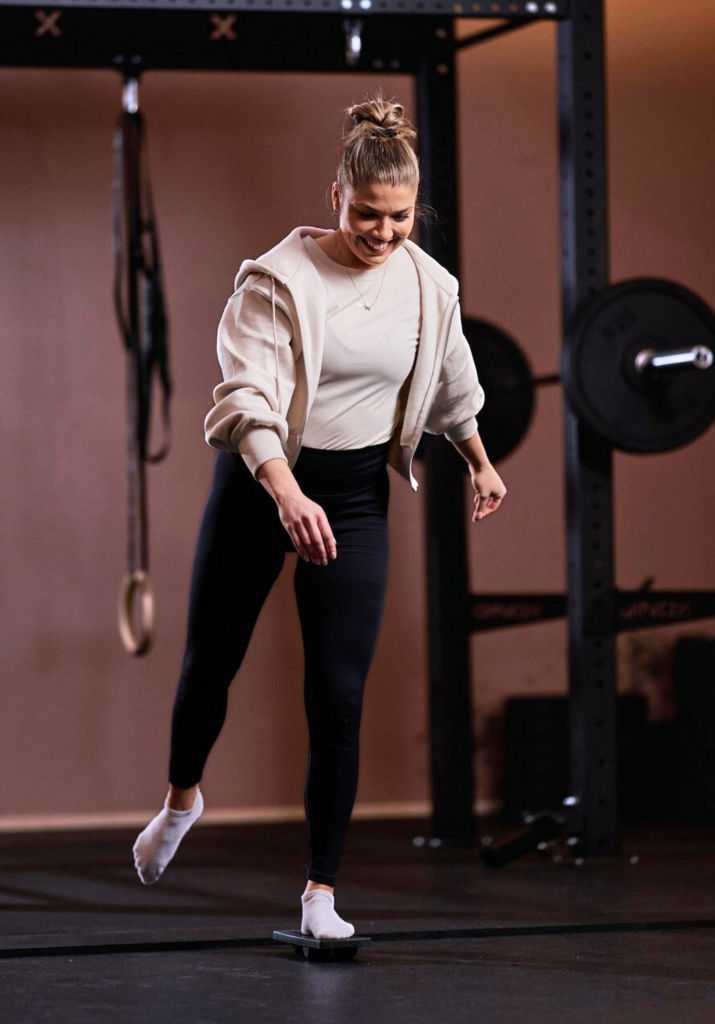Balance training directly improves posture by strengthening the core muscles that support your spine, enhancing proprioception (your body’s awareness of its position), and correcting muscle imbalances that contribute to poor alignment. Regular balance exercises activate the deep stabilizing muscles of your trunk, improving your body’s ability to maintain proper alignment during both static positions and movement. As these systems strengthen, you’ll naturally stand taller, reduce strain on your back and neck, and develop more efficient movement patterns that support healthy posture throughout your daily activities.
Understanding the connection between balance and posture
Your body’s balance system and postural control are deeply interconnected, working together constantly to keep you upright and properly aligned. Balance isn’t just about staying on your feet—it’s a complex interplay between your visual system, inner ear (vestibular system), and proprioceptors (sensors in your muscles and joints that detect position).
When you train your balance, you’re essentially fine-tuning this entire system. Your brain receives clearer signals about your body’s position in space, allowing it to make more precise adjustments to maintain optimal alignment. This improved body awareness helps you naturally correct postural deviations before they become problematic.
Many of us develop poor posture habits due to ergonomic challenges in our work environments, particularly when sitting for extended periods. Balance training counteracts these negative patterns by retraining your body’s natural alignment mechanisms and strengthening the muscles that support proper positioning.
How does balance training strengthen your core muscles?
Balance training effectively strengthens your core muscles by creating controlled instability that forces these muscle groups to engage continuously. Unlike traditional core exercises that often focus on the superficial abdominal muscles, balance work activates the deeper stabilizing muscles essential for proper posture.
When you stand on an unstable surface or hold challenging balance positions, your transverse abdominis, multifidus, diaphragm, and pelvic floor muscles—collectively known as your deep core—must work continuously to maintain stability. These are the same muscles responsible for supporting your spine in proper alignment throughout the day.
What makes balance training particularly effective is that it engages these muscles in a functional pattern that mimics real-life movements and positions. Rather than isolating muscle groups as traditional exercises might, balance work trains your core to function as an integrated system, creating more sustainable postural improvements that transfer to daily activities.
What makes balance training effective for correcting postural issues?
Balance training excels at correcting postural issues because it addresses three fundamental problems simultaneously: muscle imbalances, poor neuromuscular coordination, and limited body awareness. Many postural problems stem from certain muscles being too tight while their opposing muscles are too weak—a pattern balance training naturally corrects.
When you engage in balance exercises, your body must constantly make minute adjustments to maintain stability. This process retrains your nervous system to recognise and maintain proper alignment, essentially reprogramming faulty movement patterns that contribute to poor posture.
Another significant benefit is the improvement in proprioception—your body’s position sense. Enhanced proprioception means you become more aware of your posture throughout the day, making it easier to catch yourself slumping and self-correct without conscious effort. This neurological training effect often produces more lasting results than approaches focused solely on stretching or strengthening.
How can you incorporate balance training into your daily routine?
You can easily integrate balance training into your daily routine without dedicating extensive time to formal workouts. Start by identifying small opportunities throughout your day to challenge your balance system.
While brushing your teeth, try standing on one leg for 30 seconds each side. During work breaks, practice standing with your feet close together or in a heel-to-toe position for 1-2 minutes. These mini-sessions accumulate throughout the day, providing consistent balance training without disrupting your schedule.
For office workers, consider using a balance board or unstable surface while at your standing desk for short periods. This transforms otherwise static standing time into active postural training. Begin with 5-10 minutes and gradually increase as your balance improves.
Create environmental reminders by placing visual cues around your workspace or home that prompt you to check your posture and perform a quick balance challenge. These might be as simple as coloured dots on your computer monitor or phone reminders that encourage you to take a minute for balance work.
Which balance exercises are most effective for improving posture?
The most effective balance exercises for improving posture progressively challenge your stability while encouraging proper alignment. Single-leg stands are an excellent starting point—simply stand on one foot while maintaining a tall spine for 30-60 seconds per side, building up to longer durations as you improve.
The heel-to-toe walk (like walking a tightrope) effectively trains your body to maintain alignment while moving. Walk forward placing the heel of one foot directly in front of the toes of your other foot, keeping your eyes fixed on a point ahead and your spine elongated.
For more advanced training, unstable surface exercises provide significant benefits. Standing on a balance board while performing small, controlled movements challenges your core stabilizers and postural muscles simultaneously. This dynamic training is particularly valuable as it mimics the varied challenges we face in daily movement.
Bird-dog exercises, where you extend opposite arm and leg while on hands and knees, train cross-body coordination essential for balanced posture. Focus on maintaining a neutral spine throughout the movement rather than speed or repetitions.
Key takeaways for better posture through balance training
Improving your posture through balance training is a progressive journey that yields compounding benefits for your overall health and wellbeing. Consistency is more important than intensity—even 5-10 minutes of daily balance work can lead to noticeable improvements in how you stand, sit, and move.
Focus on quality over quantity, paying close attention to proper alignment during all balance exercises. This mindful approach helps transfer the postural awareness you develop during training into your everyday movements.
Combine balance training with regular movement breaks if you work at a desk. Standing up hourly and performing a quick balance challenge counteracts the negative effects of prolonged sitting and reinforces proper postural habits.
We at Gymba understand the challenges of maintaining good posture in today’s sedentary environments. Our balance training products are designed to make postural improvement accessible during your regular day, helping you build healthy movement habits that support proper alignment without disrupting your workflow. Remember that better posture isn’t just about looking confident—it’s a fundamental aspect of reducing neck pain, preventing injuries, and supporting your long-term health.

